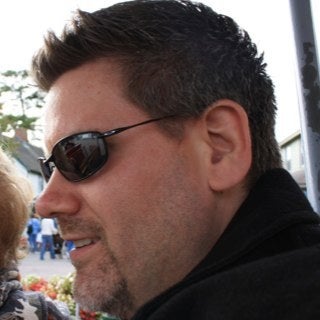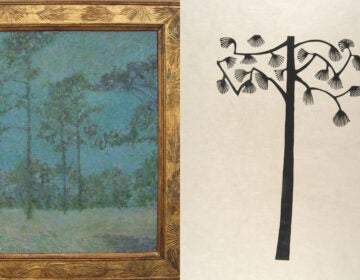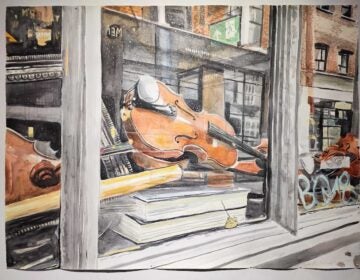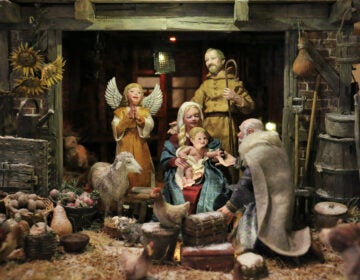Celebrating the 100th anniversary of Andrew Wyeth’s birth
This year marks the 100th anniversary of Andrew Wyeth's birth. The Brandywine River Museum of Art celebrates his life through an exhibit of his best work.
This year marks the 100th anniversary of Andrew Wyeth’s birth. The Brandywine River Museum of Art celebrates his life through an exhibit of his best work.
In 2009 the art world lost a true treasure with the passing of Andrew Wyeth. One hundred of his best paintings are on exhibit at the Brandywine River Museum of Art celebrating his life.
The exhibit covers his entire career, “from early watercolors to the very end when he finished his last painting, several months before his death,” said Audrey Lewis, curator at the Brandywine River Museum of Art.
The exhibit is so big that it spans two floors, starting with his early watercolor paintings. “In the beginning his watercolor pallet was really blues and purples, especially when he was painting the coast of Maine,” Lewis said.
In the 1940’s Andrew was introduced to egg tempera painting, which is colored pigments mixed with egg yolk. Once he began using this method Wyeth never went back to oil, “he turned away from oil completely and painted in tempera and water from that point on,” Lewis said.
Tempera is a more “painstaking, meticulous medium,” Lewis said. Wyeth was attracted to egg tempera because of its earthiness. “He said it was like building from earth.”
For Wyeth, watercolor and egg tempera represented the two sides of his personality. “He saw that [egg tempera] as his focused side, watercolor to him was his more wild side,” Lewis said.
The death of Andrew’s father, famed illustrator N.C. Wyeth who was a student of famed Wilmington illustrator Howard Pyle, “really devastated him and he said it transformed his work,” Lewis said.
Wyeth’s work changed in terms of style and subject matter. In the beginning Wyeth’s pallet was really blues and purples, after his father’s death Andrew’s palette grew more muted, and “the death of his father appeared in his work throughout the rest of his career in various ways.”
Many of Wyeth’s paintings depict friends or neighbors in poses reminiscent of death. Many times these people were sick at the time and Wyeth worried for them and painted them in these scenes.
Why has the work of Andrew Wyeth continued to draw crowds? His work is “very accessible in terms of his realism,” Lewis said. But visitors are also drawn to the work for its psychological elements, some pieces seem haunting, mysterious, or even melancholy.
The spiritual nature of Wyeth’s landscape paintings is one of the reasons his work is so popular in Japan. In fact, there is one painting in the exhibit that has never even been seen in the United States till now. The painting was purchased after it was completed by a Japanese businessman and kept in a private collection until it was loaned for this exhibit.
The Brandywine River Museum of Art houses three generations of the Wyeth family’s work, but there were still surprises for Lewis in this exhibit.
The early works of Andrew were a surprise, “because I had seen them, but seeing them together really made an impact on me because of the color.” Knowing that Wyeth’s work would become more muted over the years really made the colors of the early paintings stand out.
Of Wyeth’s use of color, she said, “He began to see color I think as a distraction in some ways, he really wanted to paint emotionally.”
The end of Wyeth’s career is another point of surprise as there is a return to more color and “a return to this more magic realist aspect of his work that you see in the early work from the 1940’s, especially after his father’s death.”
Andrew Wyeth wanted people to respond to more than just the realism in his work.
“[Andrew] said they came to his work through realism and hopefully they left with more than that.”
WHYY is your source for fact-based, in-depth journalism and information. As a nonprofit organization, we rely on financial support from readers like you. Please give today.





